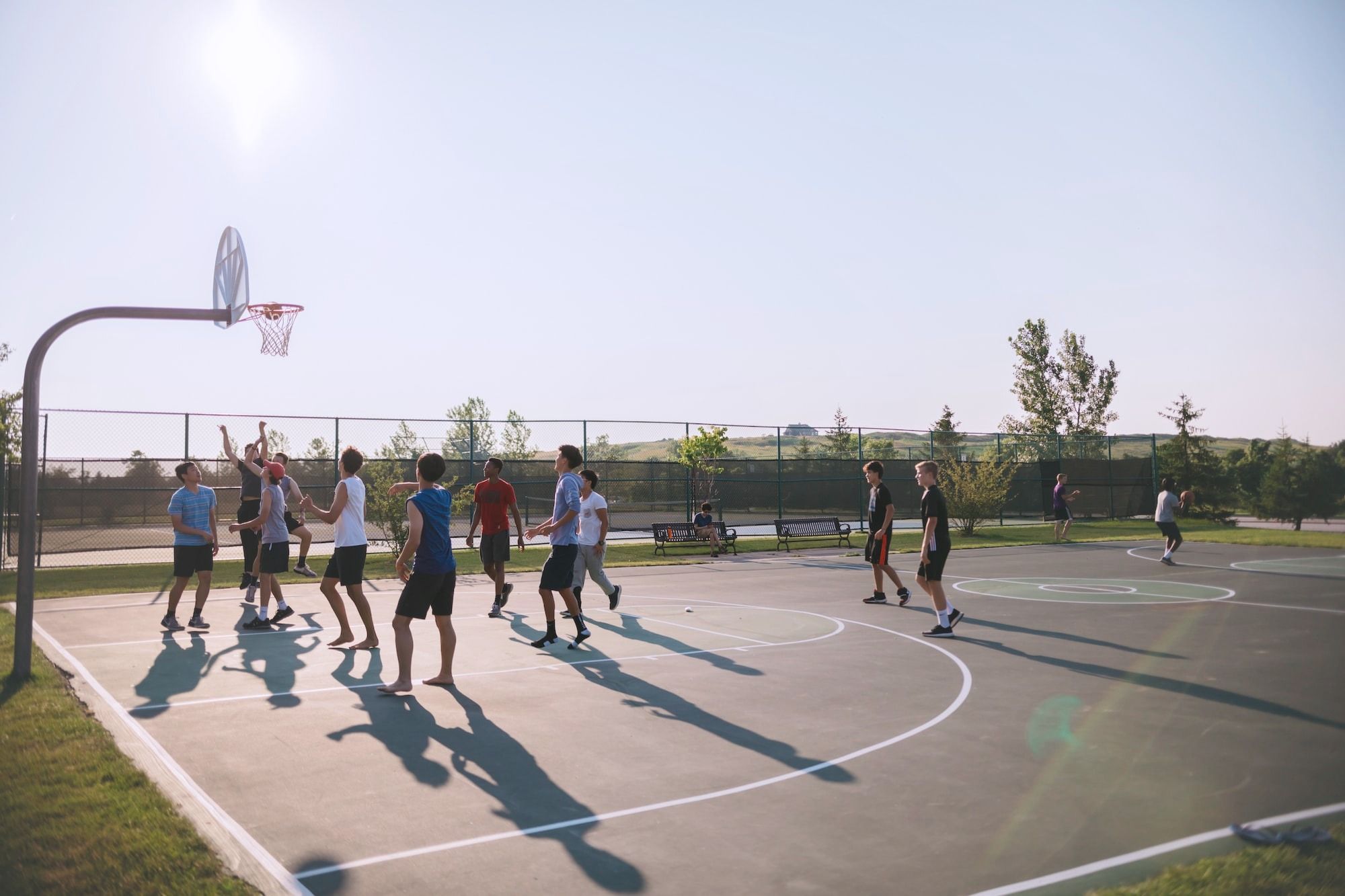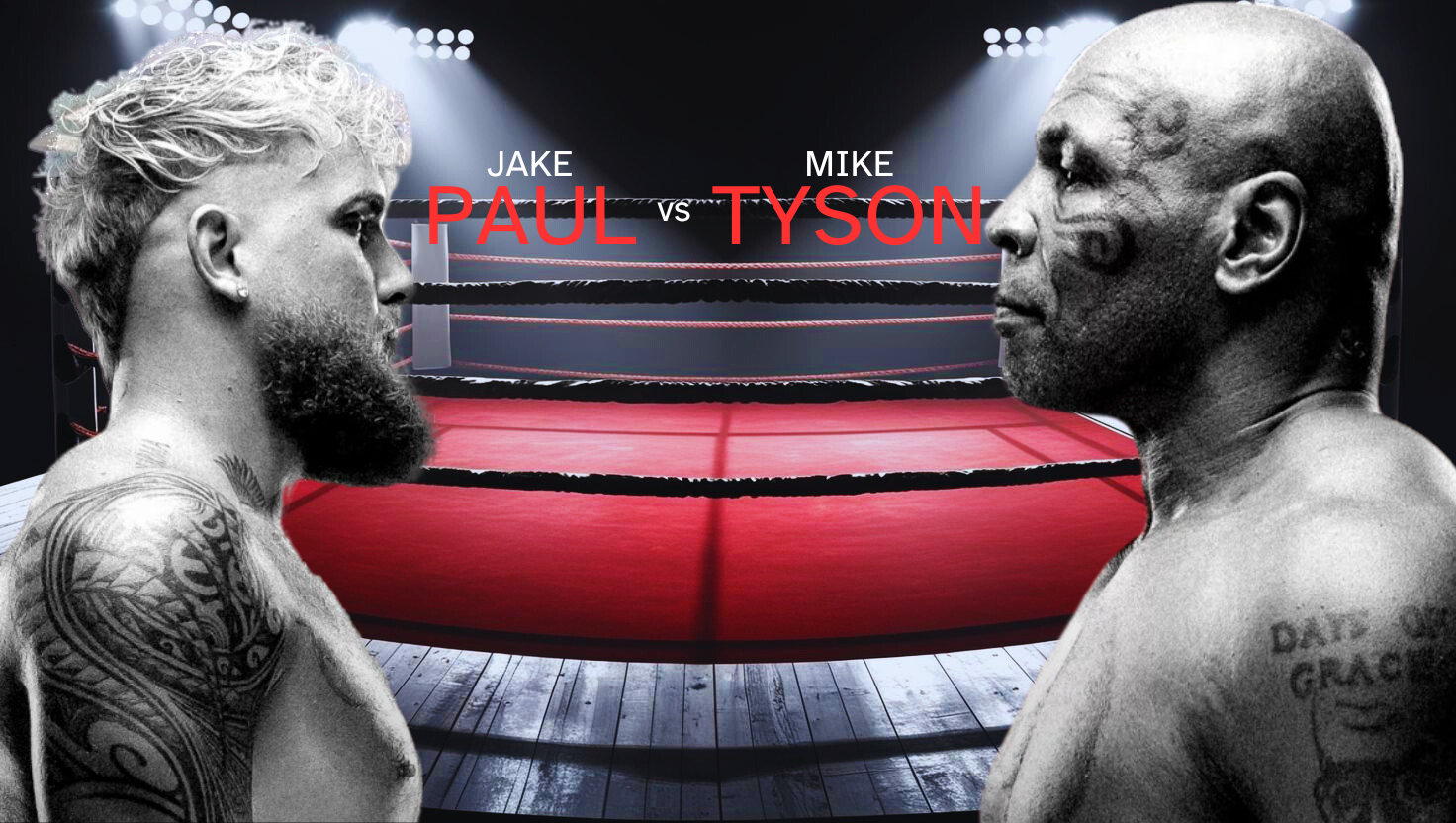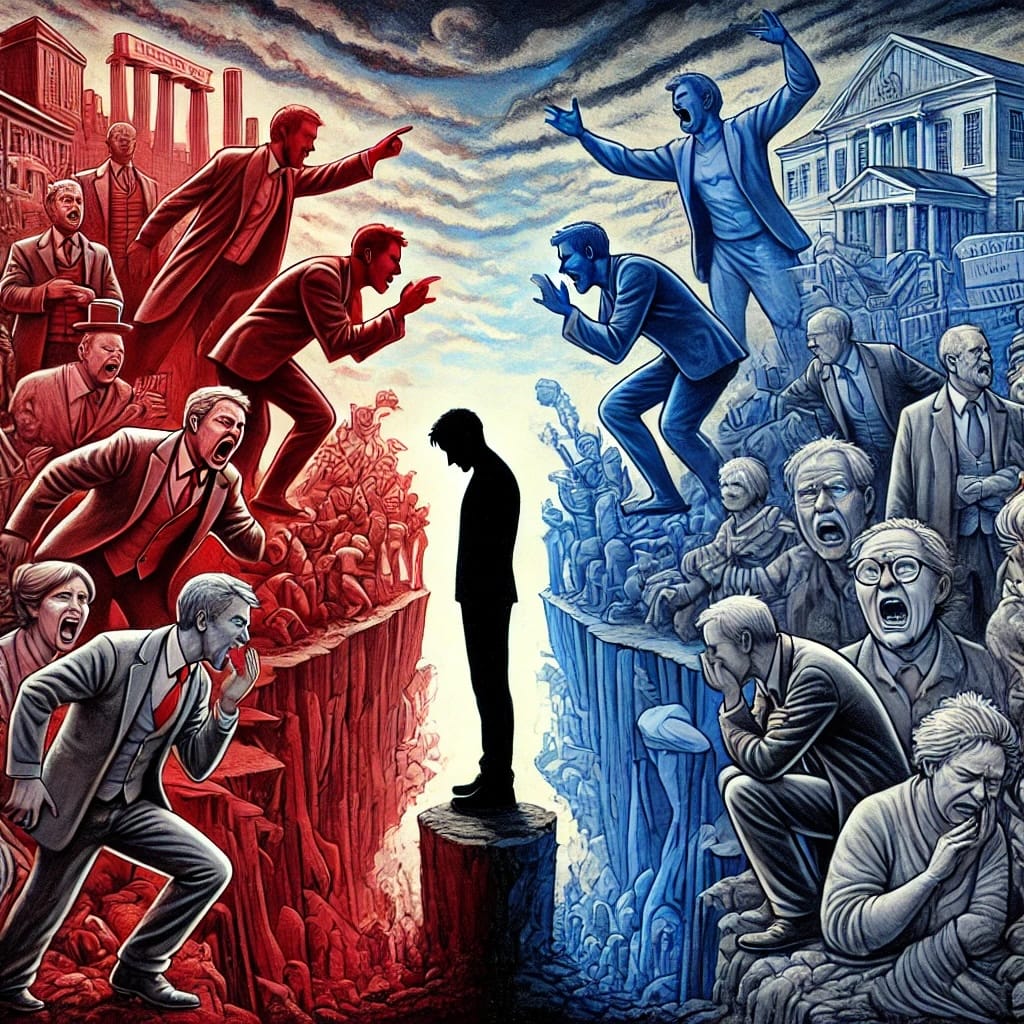Consider a basketball team. The team is made up of individual players with different strengths, weaknesses, and personalities. In order to be successful, the players need to work together as a team. They need to communicate effectively, trust each other, and respect each other's roles and responsibilities.
If the team dynamics are poor, the players may have difficulty working together. They may not communicate effectively, they may not trust each other, and they may not respect each other's roles and responsibilities. This can lead to conflict, decreased motivation, and poor performance.
On the other hand, if the team dynamics are positive, the players will be more likely to work together effectively. They will be more likely to communicate openly and honestly, they will be more likely to trust each other, and they will be more likely to respect each other's roles and responsibilities. This can lead to increased motivation, improved performance, and greater success.
Teams are essential to our personal and professional lives. We work in teams, play on teams, and even socialize in teams. The quality of our team experiences can have a profound impact on our satisfaction, well-being, and performance.
Team dynamics are the complex interactions and relationships that occur among team members. They are influenced by a variety of factors, including individual personalities, team culture, and task demands. Effective team dynamics are characterized by open communication, trust, respect, and collaboration. When team members feel comfortable sharing their ideas and opinions, they can work together more effectively to achieve their goals.
Whether you are an athlete, a coach, a student, a researcher, or a professional, you may have experienced the challenges and benefits of working in a team. You may have wondered how to improve your team’s performance, motivation, and satisfaction. You may have also wondered how psychology can help you achieve these goals.
In this article, I will explain the psychology of team dynamics and how it can help you foster effective communication and cohesion in your team. I will also provide some practical tips and examples that you can apply to your own team situation.
What is Team Dynamics?
Team dynamics is the study of how groups of people interact and perform together. It is influenced by various factors, such as:
- The size, structure, and composition of the team
- The roles, responsibilities, and expectations of each team member
- The personality, skills, and preferences of each team member
- The goals, values, and vision of the team
- The norms, rules, and culture of the team
- The external environment and context of the team
Team dynamics can be positive or negative, depending on how these factors affect the team’s behaviour and outcomes. Positive team dynamics are characterized by high levels of trust, cooperation, collaboration, creativity, productivity, and satisfaction. Negative team dynamics are characterized by low levels of trust, conflict, competition, confusion, inefficiency, and dissatisfaction.

Key Elements of Effective Team Dynamics
There are a number of key elements that contribute to effective team dynamics. These include:
- Clear communication: Team members need to be able to communicate effectively with each other. This includes being able to share their ideas and opinions clearly and concisely, as well as being able to listen to and understand others.
- Trust: Team members need to trust each other. This means having confidence in each other's abilities and motivations. When team members trust each other, they are more likely to be willing to share their ideas and opinions, and they are more likely to work together effectively.
- Respect: Team members need to respect each other. This means valuing each other's contributions and perspectives. When team members respect each other, they are more likely to be supportive of each other and to work together to achieve their goals.
- Collaboration: Team members need to be able to collaborate effectively. This means working together towards a common goal and sharing the workload. When team members collaborate effectively, they are more likely to be successful in achieving their goals.
Why is Team Dynamics Important?
Team dynamics are important because they affect the performance and well-being of both the team and its members. Effective team dynamics are associated with:
- Higher quality and quantity of work output
- Higher levels of innovation and problem-solving
- Higher levels of learning and knowledge sharing
- Higher levels of engagement and commitment
- Higher levels of psychological safety and resilience
- Lower levels of stress and burnout
- Lower levels of turnover and absenteeism
On the other hand, ineffective team dynamics can lead to:
- Lower quality and quantity of work output
- Lower levels of innovation and problem-solving
- Lower levels of learning and knowledge sharing
- Lower levels of engagement and commitment
- Lower levels of psychological safety and resilience
- Higher levels of stress and burnout
- Higher levels of turnover and absenteeism
Therefore, understanding and improving team dynamics can help you achieve better results for your team and yourself.
Benefits of Effective Team Dynamics
There are a number of benefits to effective team dynamics. These include:
- Improved performance: Teams with effective dynamics are more likely to perform better than teams with poor dynamics. This is because team members are more likely to be motivated and engaged when they feel like they are part of a cohesive team with a common goal.
- Increased innovation: Teams with effective dynamics are more likely to be innovative. This is because team members are more likely to share their ideas and opinions openly and to challenge each other's thinking.
- Improved decision-making: Teams with effective dynamics are more likely to make better decisions. This is because team members are more likely to consider different perspectives and to reach consensus.
- Increased job satisfaction: Team members with effective dynamics are more likely to be satisfied with their jobs. This is because they feel like they are part of a team that values and respects their contributions.
- Reduced turnover: Teams with effective dynamics are more likely to have lower turnover rates. This is because team members are more likely to be satisfied with their jobs and to feel like they are part of a team that they want to be a part of.

How to Improve Team Dynamics with Psychology?
Psychology is the scientific study of human behaviour and mental processes. It can help you understand the factors that influence team dynamics and how to optimize them for your team’s success. Here are some key psychological concepts and principles that can help you improve your team dynamics:
1. Communication
Communication is the process of exchanging information, ideas, feelings, and feedback between team members. It is essential for effective teamwork because it enables:
- Coordination: Communication helps team members align their actions and resources towards a common goal.
- Cooperation: Communication helps team members share their knowledge, skills, and perspectives to achieve better outcomes.
- Collaboration: Communication helps team members generate new ideas, solutions, and innovations through brainstorming, discussion, and feedback.
- Conflict resolution: Communication helps team members address their disagreements, misunderstandings, and differences in a constructive way.
To improve communication in your team, you can:
- Establish clear and frequent communication channels: Use appropriate tools and platforms (such as email, phone, chat, video call) to communicate with your team regularly. Choose the best mode of communication depending on the purpose (such as information sharing, decision making, brainstorming) and the urgency (such as routine updates vs. emergencies) of your message.
- Communicate clearly and concisely: Use simple language that everyone can understand. Avoid jargon, slang, or acronyms that may confuse or exclude some team members. Provide enough details but not too much that may overwhelm or bore your audience. Use examples or visuals to illustrate your points when possible.
- Communicate respectfully and positively: Use polite words (such as please, thank you) and tone (such as friendly, supportive) when communicating with your team. Avoid harsh words (such as rude, insulting) or tone (such as aggressive, sarcastic) that may offend or hurt your team. Express appreciation (such as praise, recognition) or encouragement (such as motivation, inspiration) when appropriate.
- Communicate actively and constructively: Listen attentively to what your team members say without interrupting or judging them. Ask open-ended questions (such as what, how, why) to clarify or explore their thoughts or feelings. Provide constructive feedback (such as specific, balanced, actionable) to help them improve their performance or behaviour. Seek feedback (such as suggestions, opinions, criticism) from your team to improve your own performance or behaviour.
2. Cohesion
Cohesion is the degree of unity and solidarity among team members. It is essential for effective teamwork because it enables:
- Commitment: Cohesion helps team members feel a sense of belonging and loyalty to the team. It also helps them align their personal goals with the team goals and work hard to achieve them.
- Trust: Cohesion helps team members feel confident and comfortable with each other. It also helps them share their thoughts, feelings, and opinions openly and honestly without fear of rejection or criticism.
- Support: Cohesion helps team members feel valued and respected by each other. It also helps them provide and receive emotional, social, and instrumental support when needed.
- Satisfaction: Cohesion helps team members feel happy and fulfilled with their team experience. It also helps them enjoy their interactions and activities with each other.
To improve cohesion in your team, you can:
- Establish a clear and shared vision: Create a compelling and inspiring vision for your team that defines its purpose, direction, and desired outcomes. Communicate this vision to your team frequently and consistently. Involve your team in setting and reviewing the team goals and objectives that align with the vision.
- Foster a positive and inclusive culture: Create a culture that promotes positive values, norms, and behaviours in your team. For example, you can encourage respect, diversity, equity, fairness, honesty, integrity, accountability, responsibility, cooperation, collaboration, creativity, innovation, excellence, etc. Recognize and celebrate the achievements, contributions, and strengths of each team member. Address and correct any negative values, norms, or behaviours that may harm the team cohesion. For example, you can discourage disrespect, discrimination, bias, injustice, dishonesty, corruption, blame, avoidance, competition, conflict, mediocrity, etc.
- Build interpersonal relationships: Encourage your team members to get to know each other better on a personal level. For example, you can create opportunities for socializing, bonding, and having fun together outside of work. You can also use icebreakers, games, or exercises to facilitate communication, interaction, and rapport building among team members. You can also use feedback sessions or surveys to solicit and share information about each team member’s preferences, expectations, styles, and needs.
- Enhance interdependence: Strengthen the sense of interdependence among your team members by emphasizing their complementary roles, skills, and resources. For example, you can assign tasks or projects that require collaboration, coordination, and integration among team members. You can also use rewards or incentives that are based on team performance rather than individual performance.
3. Leadership
Leadership is the process of influencing and guiding others towards a common goal. It is essential for effective teamwork because it enables:
- Direction: Leadership helps team members understand and follow the team vision, goals, and objectives. It also helps them prioritize and organize their tasks and resources.
- Motivation: Leadership helps team members feel inspired and energized to work towards the team goal. It also helps them overcome challenges and difficulties that may arise along the way.
- Empowerment: Leadership helps team members feel confident and capable of performing their roles and responsibilities. It also helps them develop their skills and potential through coaching, mentoring, and feedback.
- Accountability: Leadership helps team members feel responsible and accountable for their actions and results. It also helps them monitor and evaluate their performance and progress.
To improve leadership in your team, you can:
- Adopt an appropriate leadership style: Choose a leadership style that suits your team’s situation, needs, and preferences. For example, you can use a directive style when your team needs clear guidance and instructions, a participative style when your team needs involvement and input, a delegative style when your team needs autonomy and flexibility, or a transformational style when your team needs vision and inspiration.
- Develop your leadership skills: Enhance your leadership skills by learning from other leaders, reading books or articles, taking courses or workshops, or seeking feedback or coaching. Some of the key leadership skills that you can improve are communication, decision making, problem solving, conflict management, emotional intelligence, creativity, innovation, etc.
- Empower your team members: Encourage your team members to take initiative, make decisions, solve problems, and express their opinions. Provide them with the necessary resources, support, and guidance to perform their tasks. Delegate tasks or projects that match their skills, interests, and goals. Recognize and reward their achievements, contributions, and efforts.
- Promote a shared leadership culture: Foster a culture that values and supports shared leadership among team members. Shared leadership is the distribution of leadership roles and responsibilities among team members according to their expertise, experience, or preference. It allows team members to take turns leading different aspects of the team’s work. For example, you can assign different team members to lead different tasks or projects, different meetings or discussions, or different phases or stages of the team’s work.

Strategies for Fostering Effective Team Dynamics
There are a number of strategies that can be used to foster effective communication and cohesion within a team. These include:
- Establish clear goals and expectations: Team members need to know what they are working towards and what is expected of them. This can be achieved by establishing clear goals and expectations at the outset.
- Promote open communication: Team members need to feel comfortable sharing their ideas and opinions. This can be achieved by creating an environment where open communication is valued and respected.
- Build trust and rapport: Team members need to trust each other and feel comfortable working together. This can be achieved by building trust and rapport through team-building activities and social events.
- Provide clear roles and responsibilities: Team members need to know what their roles and responsibilities are. This can be achieved by developing clear job descriptions and team charters.
- Encourage collaboration: Team members need to be able to work together effectively to achieve their goals. This can be encouraged by providing opportunities for team members to collaborate on projects and tasks.
Examples of Strategies for Fostering Effective Team Dynamics
Here are some specific examples of strategies that can be used to foster effective communication and cohesion within a team:
- Hold regular team meetings: Team meetings are a great opportunity for team members to communicate with each other, share ideas and updates, and collaborate on projects.
- Use communication tools: There are a number of communication tools available that can help teams to stay connected and communicate effectively. These tools include email, instant messaging, and video conferencing.
- Encourage open feedback: Team members should feel comfortable giving and receiving feedback. This feedback can be used to improve individual and team performance.
- Celebrate successes: It is important to celebrate the team's successes. This helps to build morale and strengthen team bonds.
Challenges to Effective Team Dynamics
There are a number of challenges that can arise when trying to foster effective team dynamics. These include:
- Personality clashes: It is natural for people to have personality clashes. This can be especially challenging in a team setting, where people are expected to work together closely.
- Different communication styles: People communicate in different ways. This can lead to misunderstandings and conflict.
- Unclear roles and responsibilities: If team members are not sure what their roles and responsibilities are, it can lead to confusion and conflict.
- Lack of trust: If team members do not trust each other, it can be difficult to build effective team dynamics.
- Lack of respect: If team members do not respect each other, it can lead to conflict and decreased motivation.
Tips for Overcoming Challenges to Effective Team Dynamics
Here are some tips for overcoming challenges to effective team dynamics:
- Address personality clashes: If there are personality clashes within the team, it is important to address them head-on. This can be done by holding a team meeting to discuss the issue and to develop strategies for managing it.
- Improve communication: It is important to improve communication within the team. This can be done by training team members on effective communication skills and by providing opportunities for team members to practice communicating with each other.
- Clarify roles and responsibilities: It is important to clarify team members' roles and responsibilities. This can be done by developing clear job descriptions and team charters.
- Build trust: It is important to build trust within the team. This can be done by spending time together outside of work and by sharing personal information with each other.
- Foster respect: It is important to foster respect within the team. This can be done by valuing each other's contributions and perspectives.
- Be a role model: As a team leader, it is important to be a role model for effective communication, trust, respect, and collaboration.
- Provide feedback: It is important to provide team members with regular feedback on their performance. This feedback should be constructive and specific.
- Celebrate success: It is important to celebrate the team's successes. This fosters resilience, builds morale, and strengthens team bonds.
- Be patient: It takes time to build effective team dynamics. Don't get discouraged if you don't see results immediately. Just keep working at it and you will eventually see the benefits.
Conclusion
Team dynamics are the behavioural relationships between the members of a group. They affect the performance and well-being of both the team and its members. Effective team dynamics are essential for team success. When team members communicate effectively, trust each other, respect each other, and collaborate effectively, they are more likely to achieve their goals.
Psychology can help you understand and improve the factors that influence team dynamics, such as communication, cohesion, and leadership. By applying the psychological concepts and principles discussed in this article, you can foster effective communication and cohesion in your team, as well as enhance your own leadership skills and promote a shared leadership culture. This will help you achieve better results for your team and yourself.
I hope you found this article helpful and informative. If you have any questions, comments, or feedback, please write in the discussion section below.













Discussion